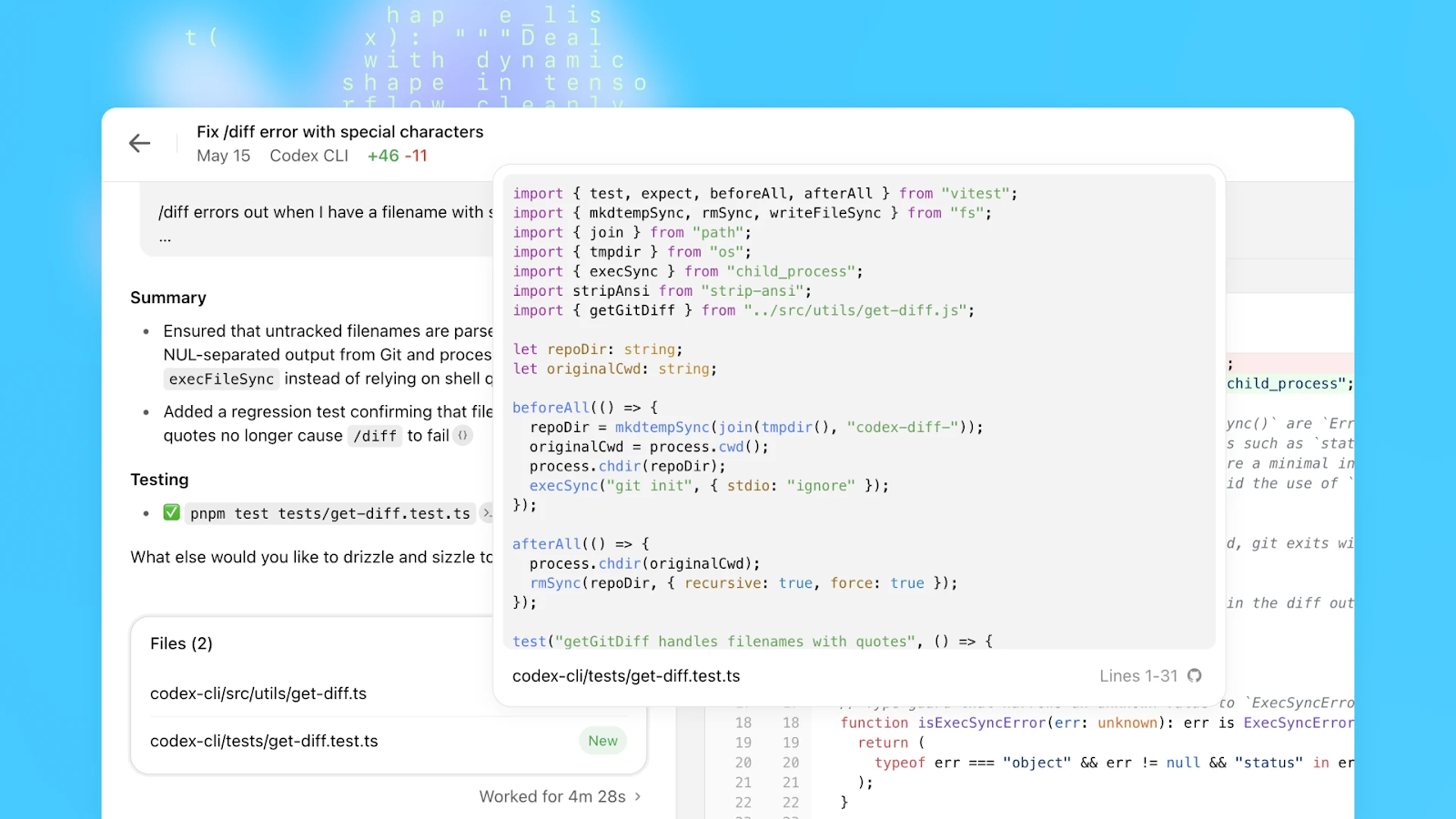
Codex vs Cursor: AI Coding Companion Comparison
AI-assisted development has reached a point where choosing your tooling isn’t just a matter of convenience - it shapes how you design, refactor, and ship software. Although Codex vs Cursor aim to improve developer productivity, they differ in architecture, workflow philosophy, and ecosystem design.
This article breaks down what each tool actually is, Cursor Codex features, and their strengths and limitations.
What is OpenAI Codex?

Codex is an AI-powered coding agent built by OpenAI. The tool helps developers write, review, and ship code faster by translating natural language into code. It is a descendant of the GPT-3 model, originally powering tools like GitHub Copilot. It can integrate into custom CLIs, automation pipelines, and IDE extensions and generate code in Python, JavaScript, TypeScript, Go, Ruby, and more.
Key features:
- Natural-language prompts to generate code in dozens of languages.
- Strong ability to translate plain English into functioning code blocks.
- Integrates with many developer workflows, including cursor-codex-style setups and local tools.
- Lightweight and customizable for automation.
Pros:
- Excellent for simple, direct code generation.
- Easy to embed into internal developer tools.
- Lower operational complexity than newer large models.
- Very predictable output patterns.
Cons:
- Weaker at reasoning and long-context tasks than GPT-4+ models.
- Not as interactive or environment-aware as full coding environments when comparing OpenAI Codex vs Cursor.
- Limited IDE-native experience.
Best for: developers who prefer API-driven code generation or want a lightweight model they can integrate anywhere.
What is Cursor?

Cursor is an AI-powered code editor designed to help developers write faster, debug and optimize code, streamline workflows, and reduce common coding errors. It focuses on coding with full-file context, refactoring tools, architectural suggestions, and command-line support. It shines in day-to-day software engineering and workflows, such as Cursor Codex CLI, Cursor Codex integration, or as a step-up alternative to Codex-powered tooling.
Key features:
- Full-project awareness with multi-file reasoning.
- The editor allows for chat-driven development.
- Workspace-aware commands, including CLI interactions.
Pros:
- Forceful for large, multi-file changes.
- Real-time code completions and suggestions.
- Smart and fast autocomplete.
- Great developer-experience design and UI.
- Capable of full-project migrations, codebase upgrades, and debugging.
Cons:
- Requires using the Cursor IDE.
- Not well-suited for small projects.
- Some features depend on cloud context windows.
- More opinionated and less script-friendly than Codex.
Best for: developers who want an AI assistant inside a modern IDE instead of an API-only model.
Complementary AI Agent: UI Bakery
UI Bakery is another sort of an AI Agent. Working as a text-to-app generator, platform that helps teams build internal tools, dashboards, workflows, and connectors. It’s not directly a coding IDE like Cursor or a model like Codex, but it is used by teams wanting to build apps, business dashboards, CRUD interfaces, and admin tools using natural language prompts without unnecessary costs and time.
Key features:
- Natural-language automation creator.
- Automatic UI generation for internal tools.
- Database and API connectors.
- Workflow orchestration and integration with enterprise data.
- Visual editor with AI-generated logic blocks.
Pros:
- Integrations with SQL databases, REST APIs, GraphQL, Airtable, and Google Sheets make it ideal for business teams that rely on varied data sources.
- Extremely fast internal tool development.
- Clean, flexible UI components.
- Easy for non-engineers to use.
Cons:
- It’s not directly a code editor.
- Less suited for complex, multi-file engineering tasks.
Best for: teams that want AI-assisted internal tool building with minimal engineering overhead.
Cursor vs Codex vs UI Bakery comparison
Final thoughts
Asking yourself the question, is Codex better than Cursor or vice versa – both tools serve different audiences. Developers often explore hybrid approaches, such as running codex in cursor or experimenting with codex with cursor extensions – but most teams ultimately choose based on workflow preference.
Whether you’re evaluating Codex/Cursor style workflows or testing next-gen setups like GPT 5 Codex Cursor, the right tool depends on whether you want an API-first model or a full AI-native IDE experience.



